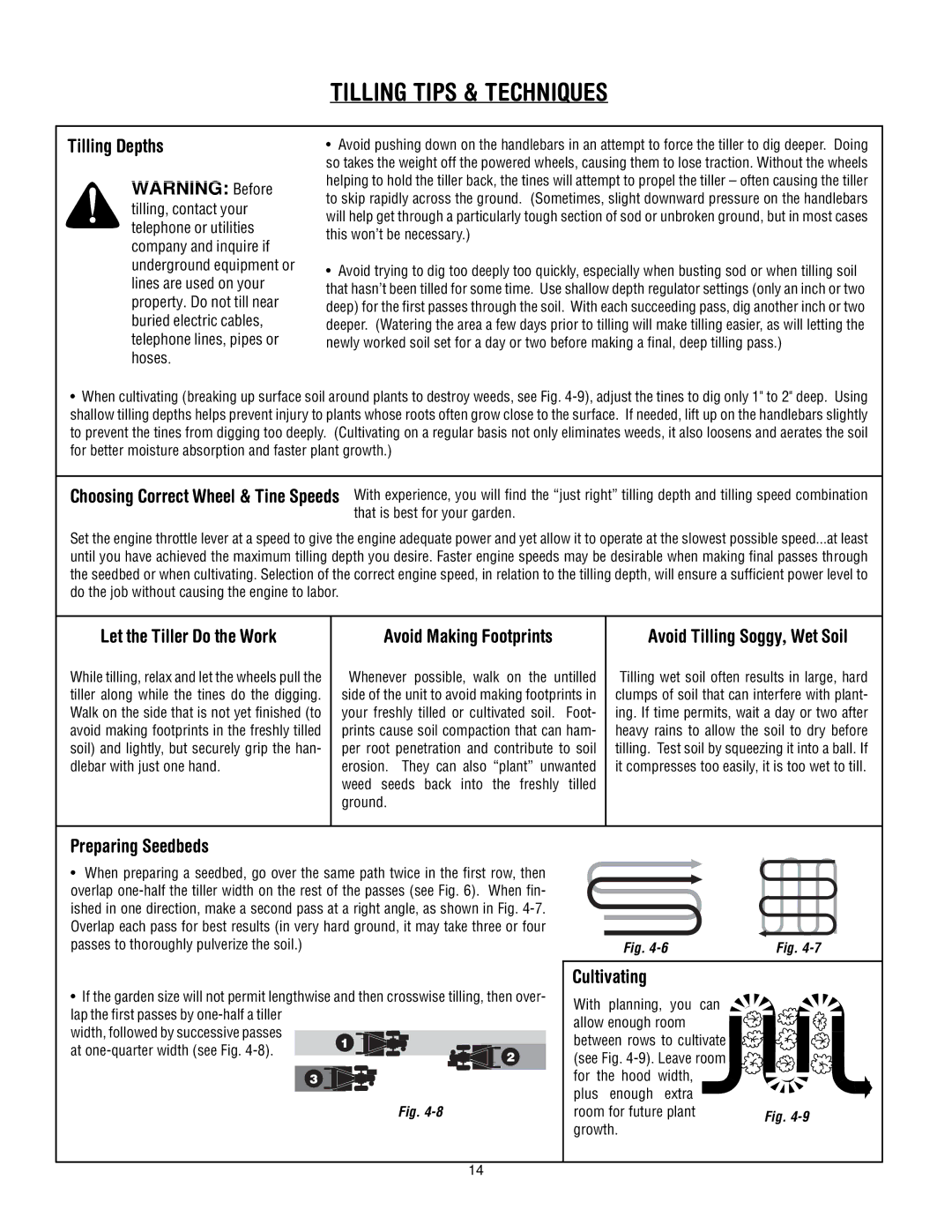630C-Tuffy specifications
The Troy-Bilt 630C-Tuffy stands out as a reliable and robust garden tiller designed for homeowners and gardening enthusiasts looking to cultivate their gardens with ease. This tiller is particularly noted for its performance, durability, and user-friendly features, making it a favored choice among many.One of the most prominent characteristics of the 630C-Tuffy is its powerful 208cc engine, which provides ample power for breaking up hard soil, turning compacted ground, and mixing in compost or fertilizers. This engine ensures that the tiller can handle a variety of tasks, from light tilling in a small garden to more demanding projects. The tiller features a 16-inch tilling width, allowing users to cover a significant area in a shorter amount of time while the adjustable tilling depth can be set from 1 to 7 inches to suit specific gardening needs.
A standout technology utilized in the Troy-Bilt 630C-Tuffy is its Counter-Rotating Tines (CRT). This innovation allows the tines to turn in the opposite direction of the wheels, creating a more effective and efficient tilling action. This design not only aids in breaking up the soil more thoroughly but also reduces the likelihood of the tiller becoming bogged down in tougher soil conditions.
The tiller is built with a sturdy steel frame and heavy-duty tines that ensure longevity and reliability even with repeated use. Its 6-position adjustable handle offers comfortable operation, enabling users to customize the height according to their preference, which helps reduce fatigue during long tilling sessions. Moreover, the Troy-Bilt 630C-Tuffy is equipped with a bump start feature, making it easy to start and operate.
For added convenience, this tiller features large, durable wheels that enhance maneuverability across various terrains, providing improved stability and traction. The 630C-Tuffy also boasts a folding handle for easier storage, allowing users to save space in their garages or sheds when not in use.
In summary, the Troy-Bilt 630C-Tuffy combines power, technology, and user-friendly features to deliver a top-tier gardening tool. With its ergonomic design, efficient tilling capabilities, and strong build, it is a valuable addition to any garden enthusiast's toolkit, ready to turn soil and nurture thriving gardens.

